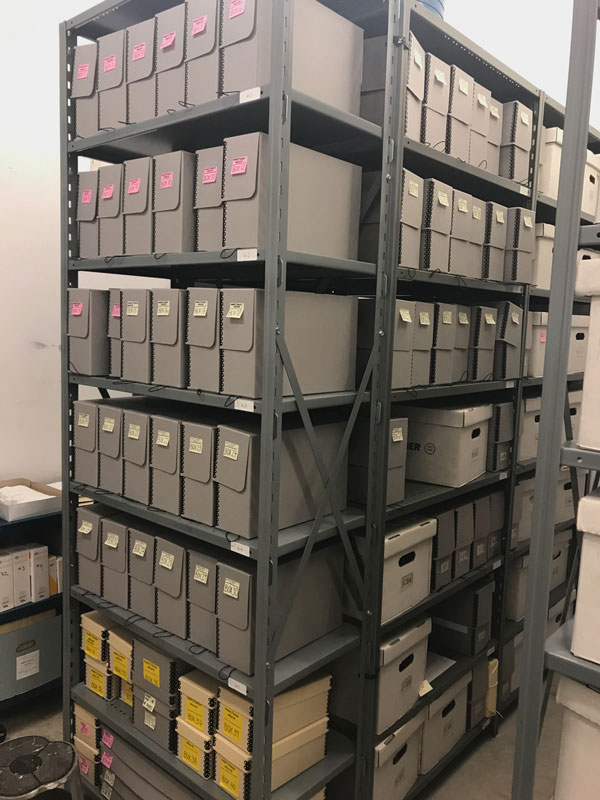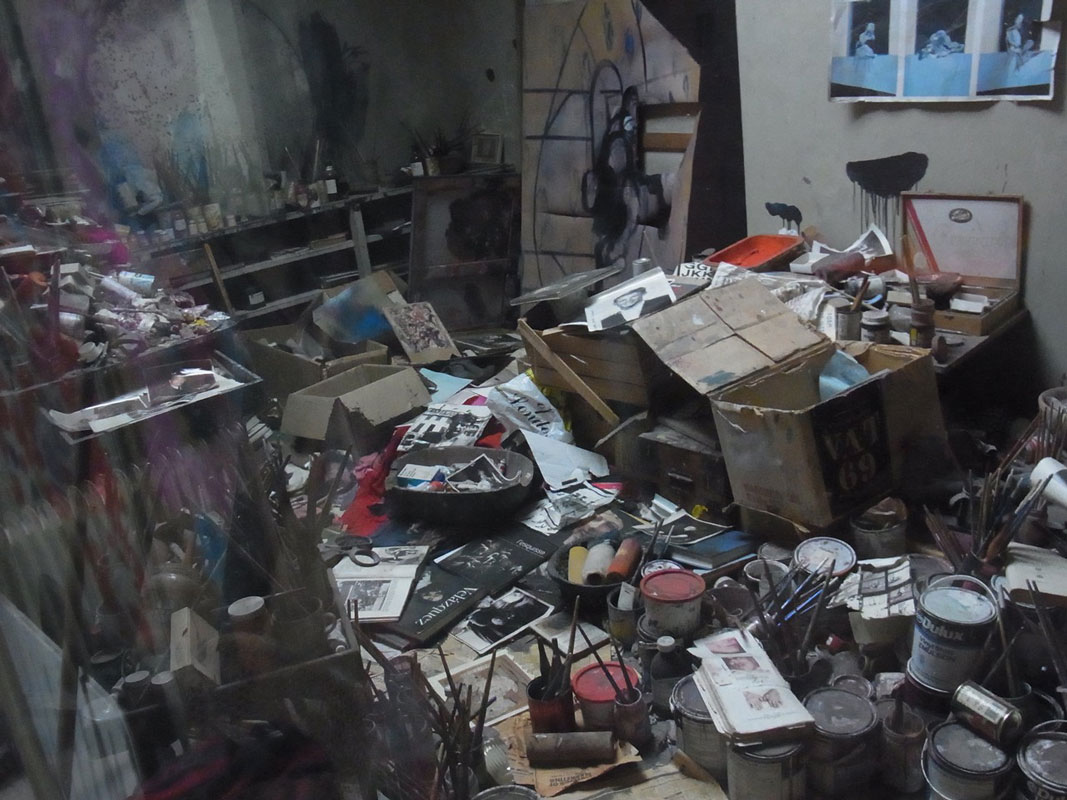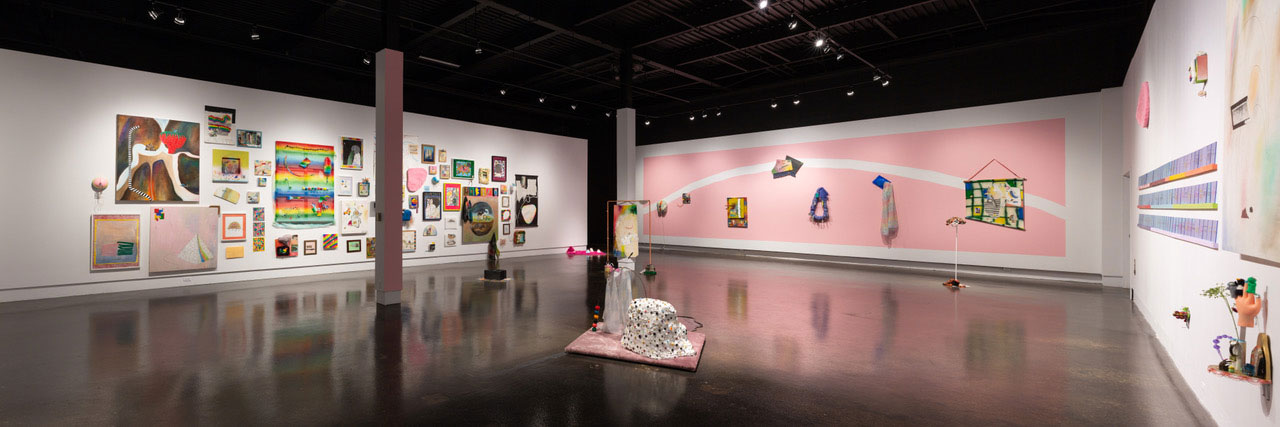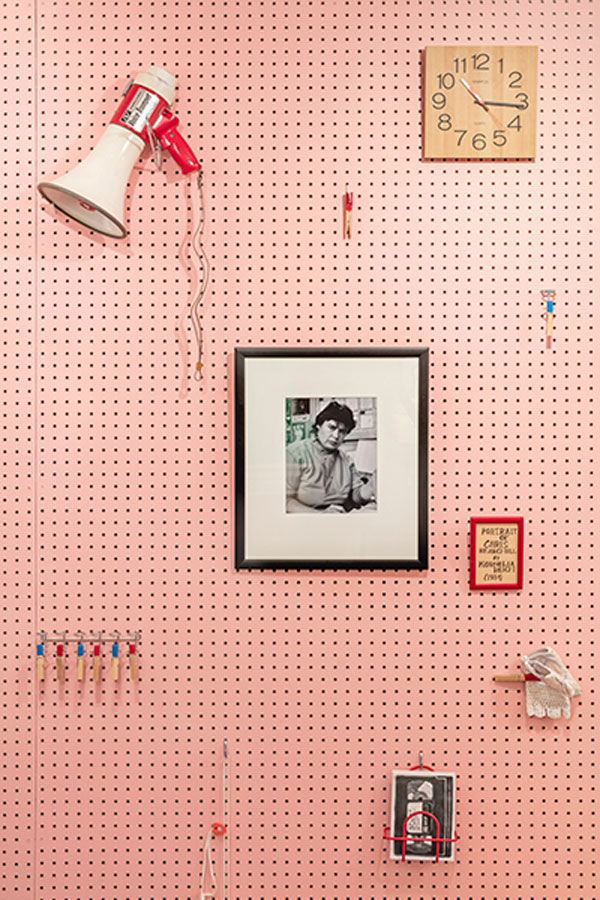chairs /
- Brayden Nicholas Burrard, Concordia University
- Martha Langford, Concordia University

The Morris/Trasov Archive and Other Collections. The Morris and Helen Belkin Art Gallery, UBC, Vancouver. Photo: Brayden Burrard, February 2019.

Francis Bacon. Francis Bacon's studio at the City Gallery The Hugh Lane. Dublin, Ireland. Photo: antomoro, July 19, 2016.
Since Dada, artists have been fascinated with ephemera, self-consciously accumulating stuff as the raw material of their work in photography, collage, mail art, cinema, video, installation, and performance. Pop, Fluxus, Conceptual Art have reflected, fetishized, and critiqued the flood of print and consumer culture in technological societies. Their own collections come to light when artists reach a certain age and begin to think of this amassment as an archive.
What happens when these collections enter the public sphere? Or more precisely, what has happened, since there are numerous examples of artist’s or artist-collectives’ archives become fonds and housed in special collections, museum archives, and other institutions. Vincent Bonin has examined this shift, as has Artexte in its artists’ and curatorial residencies. Where else has this been going on? We are interested in the stories that such archives have been allowed to tell, and the counter-narratives that the translation from private to public has disallowed.
Brayden Nicholas Burrard is a doctoral student in the Department of Art History, Concordia University. Provisionally entitled “Image Bank and Fluxus: between Vancouver and West Berlin”, his thesis will examine Image Bank’s mail art network and the subsequent deposit of the Morris/Trasov Archive (UBC, 1991). Burrard reviewed the Berlin exhibition Image Bank (KW Institute, 2019, in RACAR Fall 2019) and he delivered “Counter-community movements and Image Bank in Los Angeles: the 1974 Decca Dance,” at UAAC’s annual conference (Quebec City, 2019).
Martha Langford is Research Chair and Director of the Gail and Stephen A. Jarislowsky Institute for Studies in Canadian Art, Distinguished University Research Professor in the Department of Art History, Concordia University (Montreal), and a fellow of the Royal Society of Canada. Books include Suspended Conversations: The Afterlife of Memory in Photographic Albums (2001); Scissors, Paper, Stone: Expressions of Memory in Contemporary Photographic Art (2007); A Cold War Tourist and His Camera, co-written with John Langford (2011); and an edited collection, Narratives Unfolding: National Art Histories in an Unfinished World (2017).
C.1.1 Ana Mendieta and the Archical Makings of a Life-in-death
Hatty Nestor, Birkbeck College
Mendieta’s 1981 poem Pain of Cuba, Body I am marks Mendieta’s ontological displacement, conveyed through what Simek Shropshire has called ‘the presence of linguistic dexis’ (2017). Linguistically and tangibly, Mendieta’s work consistently refers to her exile from Cuba; her re-location both physically and subjectively. Theories of Latinidad proposed by María Rodríguez (2003), and Maria Antònia (2015) mark the diaspora bound to what José Esteban Muñoz’s denotes as ‘vitalisms afterburn of browness’ (2011), to map Mendieta’s subjectivity as an exiled woman from Cuba to the United States. On Mendieta’s (1980) return to Cuba, she created the Rupestrian sculptures (1982) in Jaruco State Park in Havana, Artist Elise Rasmuseens, and scholar Jose Quiroga (2005) sought to find them, yet the traces of her mark-making in the land remain in the cultural imagination. Drawing on debates in posed by Alvarado (2018), Oliver-Rotger (2015) and Hyacinthe (2019) I situate the spatial, temporal and embodied meditation Mendieta presents in these pieces through theories of the Latinidad, asking wider questions of not just ontological displacement, but as a woman who reclaimed her agency through mark-making in the land.
I am interested precisely in the tension between these efforts to locate Mendieta, and what is lost, distilled and re-found in the political decision to reject Mendieta as a subject formed through an act of violence, and the subject formation that such violence might generate. Mendieta’s death, allegedly by her husband Carl Andre, beckons the question: where does mortality prevail when seeking for a resolution in these undeniably fraught images? Or as a form of subversion, ungraspable beyond our idea of subjecthood? I intend to use examples from the archive to uncover such questions. I argue that to comprehend Mendieta – or even who or what or where we might be considering in uttering her name – is to acknowledge that she is often still bound to negative rhetoric associated directly to her (supposed) murder as a woman exiled from Cuba.
Hatty Nestor is a cultural critic and writer who is presently completing an AHRC-funded PhD about Ana Mendieta at Birkbeck, University of London. She has been writer-in-residence at the Jerwood Space in London (2017) and critic-in-residence at Studio Das Weisse Haus in Vienna (2019). Her forthcoming book Ethical Portraits will be published with Zero Books in 2021. Her writing has been supported by the Arts Council, and appears in Frieze, Art in America, The White Review, and many other publications.

Lauren Prousky. JunkDrawerPhantomDressUpSoirée. University of Waterloo Art Gallery, 2019. Photo: Scott Lee.
C.1.2 JunkDrawerPhantomDressUpSoirée: Archive as Poem, Archive as Play
Lauren Prousky, independent artist, researcher
Eggs
A round, smooth, edible object. Has a mystery inside.
Small Explosions
A displacement of matter where the force of the explosion comes from within. Not dangerous. Common practice.
Whatever The Sun Does
A bouncy ball. A hot danger.
Pretend Sea Creatures
A slippery being with a soft head and too many limbs.
Grids
A repeating shape that feels really sure of herself.
Buttons
Small shapes with at least 1 hole. Sits atop of something else. Never fully integrated into the
thing it is placed upon. A minority culture.
My research analyzes the archive as a malleable tool for art making. Inspired by Francis Ponge’s “description-definitions” and Gertrude Stein’s idea of the prolonged present, I created a personal archive of concepts for images from which to build all my subsequent work. Used in this way, the archival form becomes the foundation for storytelling and poetry, subverting the idea that the archive is something statically formal, bureaucratic or paramount to its anarchival by-products. My paper discusses how an autoethnographic and poetic approach to the archive can create an evolving network, where meaning is continually wrapped around the archive and the artwork through a non-hierarchical gathering of symbols materials, text and images. As a foundational text for my studio practice, this archive is a living document that changes each time it is put to use. It is both a long form poem and a creative manifesto that lends itself to play-based exploration and self-discovery.
Lauren Prousky is an artist, curator, writer and arts administrator based in Kitchener-Waterloo. She received her MFA from the University of Waterloo for her thesis, JunkDrawerPhantomDressUpSoirée and her BFA from Concordia University in studio art and English literature. Lauren’s current work involves doing a lot of sudoku puzzles, trying to paint the concept of distance and creating sculptures and fiber works that explore the aesthetics and linguistics of cultural Judaism. She has exhibited her work around Canada and occasionally elsewhere and has done residencies in Iceland, British Columbia and Brooklyn. Earlier this year Lauren completed a contract as the assistant curator of Gallery Stratford and once co-curated a poetry and performance event in a public pool.

Hazel Meyer and Cait McKinney. Tape Condition: degraded. Detail. Image courtesy the artists. Photo: Toni Hafkenscheid.
C.1.3 Erotic Fever in the Archive: Imagining a queer porn paradise in Hazel Meyer and Cait McKinney’s exhibition Tape Condition: degraded
Genevieve Flavelle, Queen’s University
This paper examines historian Cait McKinney and artist Hazel Meyer’s exhibition Tape Condition: degraded, an intervention in Canada’s largest LGBTQ archive the ArQuives in Toronto, Ontario. I argue that the exhibition makes a compelling case for porn as a vital historical record of queer pleasure and art as an avenue through which absences in historical representation can be rectified. Meyer and McKinney’s exhibition began with a zealous two-year search through the ArQuives’s unusual collection of over 800 porn VHS tapes for a video featuring women, trans folks, people of colour, and/or performers with non-normative bodies. They found nothing. However, through their encounter with this absence, the couple’s archive fever was supplanted by erotic fever as they began to fantasize about not only their dream tapes, but the different kind of archive that might contain them, a multifunctional space for watching, digitizing, fantasizing, and getting off. In 2016, Meyer and McKinney fully realized their imagined archive as the installation Tape Condition: degraded at the ArQuives. The innovative exhibition – equal parts archive, digitization suite, pervy queer sex zone, and community recreation room – activated embodied, erotic, and imaginative responses to the archive as a repository of knowledge, as well as a site of pleasure, fantasy and activism. The exhibition created a necessary intervention in the gay male bias of the archives’ holdings and engaged the community in addressing its absences through creative and speculative strategies.
Genevieve Flavelle is an independent curator, writer and PhD student at Queen’s University. She holds a BA in Art History from NSCAD University and a MA in Art History from Western University. Genevieve’s research and curatorial interests include contemporary art, feminist curatorial strategies, curatorial interventions in museums and archives, and queer theory. She has curated exhibitions at Modern Fuel Artist-Run Centre (Kingston ON), Younger than Beyonce Gallery (Toronto) and Good Sport Gallery (London ON). Her writing has appeared in C Magazine, BlackFlash, Esse, and exhibition catalogues. She is a settler of Scottish and French ancestry living in Tkaronto/Toronto.



